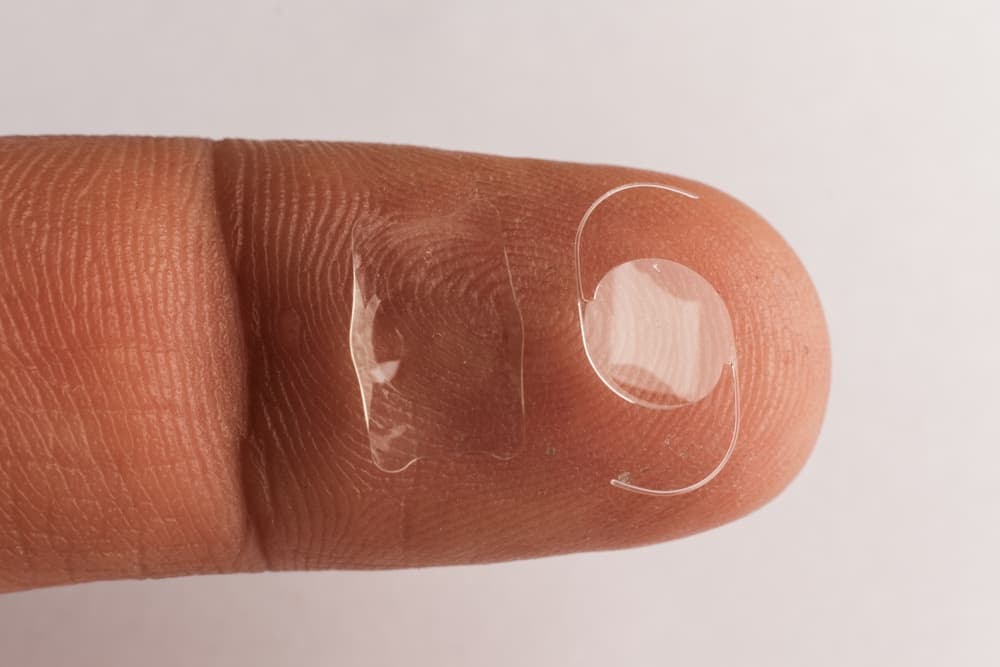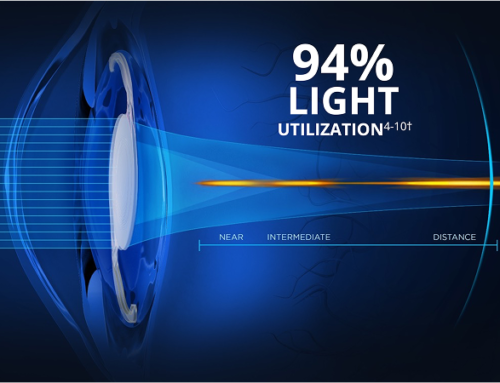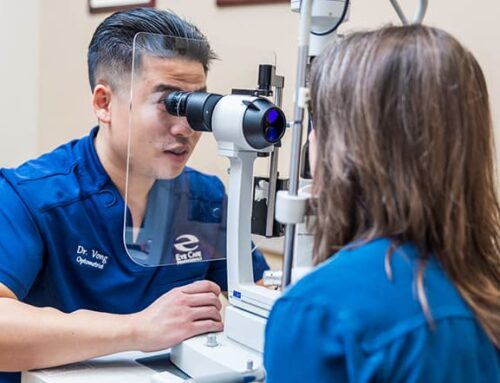Intraocular lenses (IOLs) have revolutionized vision correction, providing a lasting solution for individuals suffering from cataracts and other vision impairments. As advancements in medical technology continue to evolve, IOLs have emerged as a safe and effective option to restore clarity and improve quality of life.
Here, we will explore the different types of IOLs available, their benefits and risks, and what patients can expect during the procedure and recovery process. Whether you’re considering IOL surgery or simply seeking to understand more about this innovative treatment, this comprehensive guide will equip you with essential knowledge.
Basics of IOL: What is IOLs?
A frequently asked question is, “What is an intraocular lens?” According to the American Academy of Ophthalmology, an intraocular lens (IOL) is a small artificial lens that is implanted in the eye during cataract surgery. Crafted from soft, flexible materials such as silicone or acrylic, the IOL is designed to focus light onto the retina, much like a natural lens. IOLs are available in various sizes and materials to meet different eye conditions and individual needs.
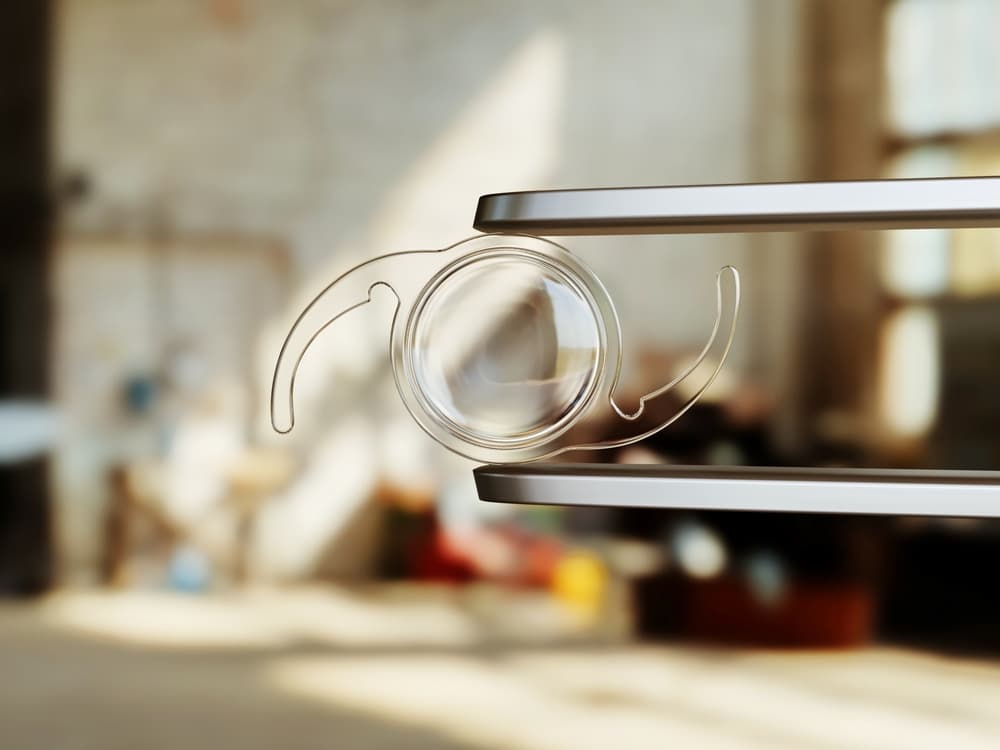
How do Intraocular Lenses Work?
These lenses concentrate light onto the retina, effectively replicating the natural lens’s function and restoring vision clarity. By imitating the natural lens, they achieve precise and accurate focus, enabling individuals to experience enhanced sharpness and clarity in their sight.
Vision Correction Techniques and Applications
Intraocular lenses (IOLs) effectively treat cataracts and provide the additional advantage of correcting refractive errors like astigmatism and presbyopia. With IOLs, individuals can enjoy clear vision at multiple distances, significantly enhancing their overall visual performance and quality of life.
Conditions Treated by IOL Implants
Similar to glasses or contacts, IOL implants can address vision problems, including:
- Myopia (nearsightedness).
- Hyperopia (farsightedness).
- Presbyopia (age-related farsightedness).
- Astigmatism (altered eye shape)
The primary objective of developing the intraocular lens (IOL) was to address the cloudiness caused by cataracts. It remains the sole effective method for restoring vision once cataracts have fully matured.
A Complete Guide to Different Types of IOLs
If you’re curious about the various types of intraocular lenses (IOLs) available, here’s a comprehensive overview of each one:
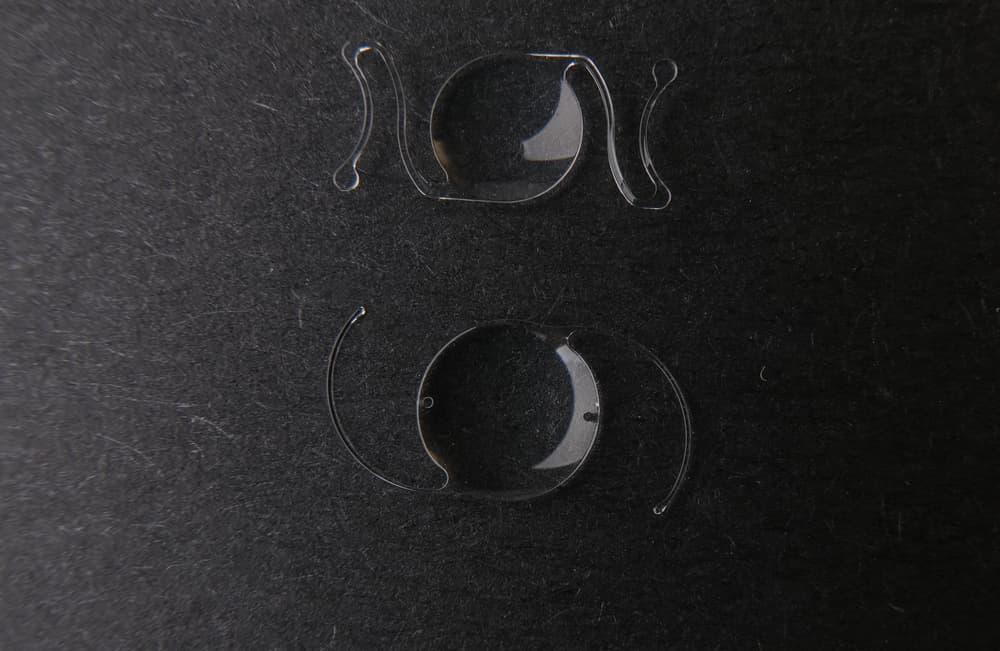
Monofocal IOLs
Monofocal intraocular lenses (IOLs) are crafted to deliver clear vision at a single distance, usually either near or far. As the standard option for IOLs, they primarily correct distance vision, leaving patients to depend on reading glasses for close-up tasks following surgery.
Multifocal IOLs
Multifocal IOLs offer an expanded range of vision by utilizing multiple focal zones across the lens surface. By providing clear sight at various distances, they seek to reduce or even eliminate the dependence on glasses.
Trifocal IOLs
Trifocal IOLs significantly advance the multifocal concept by adding an extra zone specifically designed to enhance intermediate vision. This innovation improves patients’ ability to see objects at arm’s length, making it particularly useful for activities such as computer work or reading dashboard displays.
Toric IOLs
Patients with astigmatism may experience blurred vision at various distances due to irregularities in the cornea or lens. Toric intraocular lenses (IOLs) are designed to correct this condition, potentially reducing or eliminating astigmatic errors without additional surgery.
Accommodating IOLs
Accommodating IOLs mimic eye lens flexibility for seamless near and far vision transition via natural muscle contractions. This dynamic focusing mechanism aims to offer a more natural and responsive adaptation to varying visual demands.
Light Adjustable Lenses
The advent of light-adjustable lenses (LAL) has transformed the field of ophthalmology. These innovative lenses are engineered to enhance vision through a technology that enables adjustments to lens power using UV light after implantation in the eye. This allows the vision to be customized to the patient even after surgery.
IOL Materials Demystified: A Guide for Ophthalmic Health
The selection of intraocular lens (IOL) material is crucial for achieving favorable long-term outcomes in cataract surgery. Key factors to consider include optical clarity, biocompatibility, flexibility, refractive index, and anterior chamber stability. Let’s explore the three main materials used in IOL production—PMMA, acrylic, and silicone—and discover the unique characteristics that set each apart.
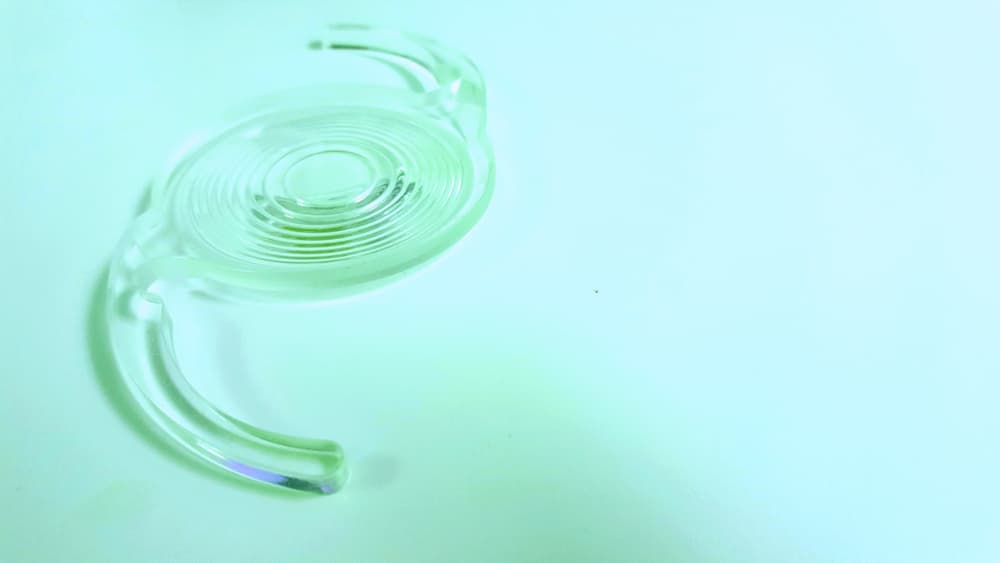
The Significance of Material Selection
IOL surgeries are not a one-size-fits-all solution. Factors such as the patient’s age, lifestyle, and ocular health should guide the selection of materials. We can take the first step toward personalized cataract care by comprehending the characteristics and distinctions between various materials.
A Trio of Materials: PMMA, Acrylic, and Silicone
Each material possesses unique properties that can influence vision outcomes and patient safety following cataract surgery. But what exactly are these properties, and how do they manifest in real-world applications?
| Meaning | Characteristics | Biocompatibility and Safety | |
PMMA IOLs |
Historically, IOLs were made of PMMA, a rigid yet reliable polymer. The first intraocular lens ever implanted in a human was made from this material. While newer materials have since eclipsed PMMA in recent decades, there are still situations where PMMA continues to be the preferred choice. | PMMA IOLs have been in use since the 1940s, delivering exceptional optical results. Their primary advantage lies in their optical clarity and precision in focusing light, making them an ideal choice for patients with specific visual needs. | The inert nature of PMMA renders it one of the safest materials for surgical implants. Because the immune system does not recognize PMMA as a foreign substance, the risk of inflammation and adverse reactions is significantly minimized. |
Acrylic IOLs |
Recent advancements in medical-grade plastics have led to the development of acrylic IOLs, a versatile option suitable for a broad spectrum of patients and conditions. Their inherent flexibility accommodates various surgical techniques. | Highly modified acrylics provide outstanding optical clarity and are particularly well-suited for micro-incision cataract surgery, which reduces the surgical footprint and promotes rapid healing. | Acrylic IOLs are engineered to closely mimic the natural lens in both material properties and biocompatibility, prioritizing comfort and longevity within the eye. |
Silicone IOLs |
Silicone IOLs highlight flexibility, particularly in accommodating IOLs designed to replicate the natural lens and facilitate focusing at varying distances. | Silicone’s unique characteristics enable the creation of lenses that can change shape within the eye, offering a dynamic range of vision ideal for correcting presbyopia. | Initially, silicone IOLs raised concerns about capsular opacification, but advancements in material technology have effectively addressed these issues, ensuring excellent biocompatibility and long-term safety. |
A Closer Look at IOLs Benefits
In contemporary ophthalmology, intraocular lenses (IOLs) stand as a remarkable testament to the significant advancements made in enhancing visual clarity. These innovative devices enable individuals to improve their vision without the reliance on glasses or contact lenses. By correcting vision impairments, IOLs empower people to live more freely and independently.
Here are the diverse benefits that IOLs provide, effectively transforming the landscape of vision correction for millions around the globe.
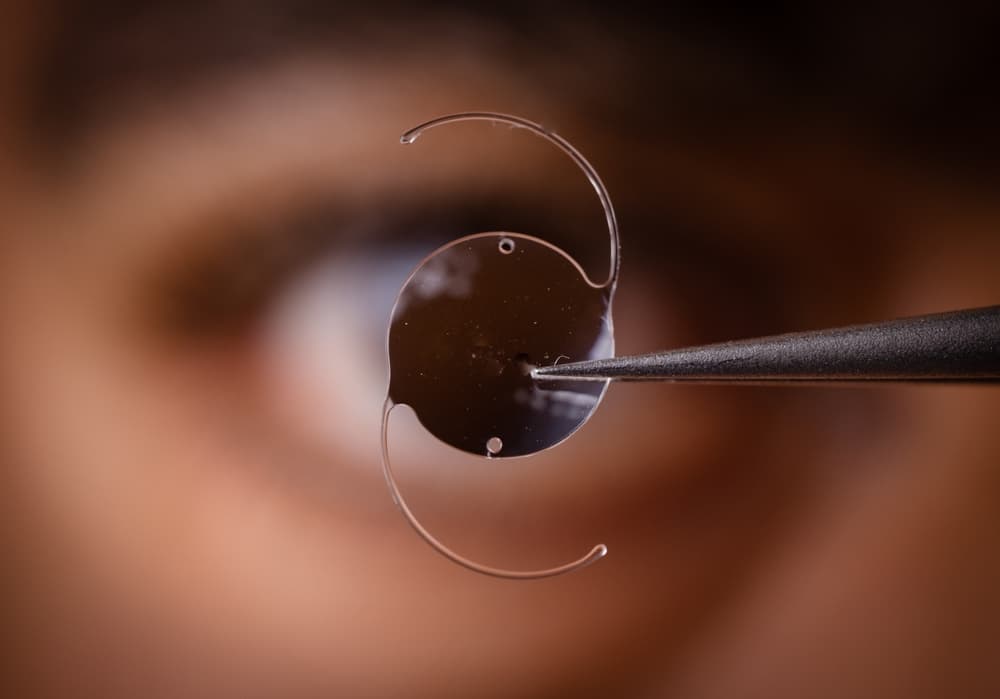
Improved Vision
Intraocular lenses (IOLs) have a significant and immediate effect on vision clarity and sharpness. Designed to address a range of visual challenges, IOLs do more than simply correct near and far sight; they also effectively tackle astigmatism. These lenses ensure individuals achieve clear vision following cataract surgery.
Increased Independence from Glasses
One of the most freeing benefits of IOLs is the marked decrease in reliance on prescription eyewear. This newfound independence fosters a more spontaneous and comfortable lifestyle.
Customization Options
IOLs are not a universal solution; instead, they offer a range of lens types that cater to the individual needs of patients. This customization guarantees that each lens choice fits seamlessly with the patient’s lifestyle and visual demands.
Advancements in IOL Technology: A Clear Vision for the Future
A significant advancement in eye care is Intraocular Lens (IOL) technology. Intraocular lens (IOL) technology is a significant advancement in eye care. This innovative technology assists cataract patients and eye surgeons in enhancing vision and safeguarding eye health. This technology offers various options to cater to individual needs.
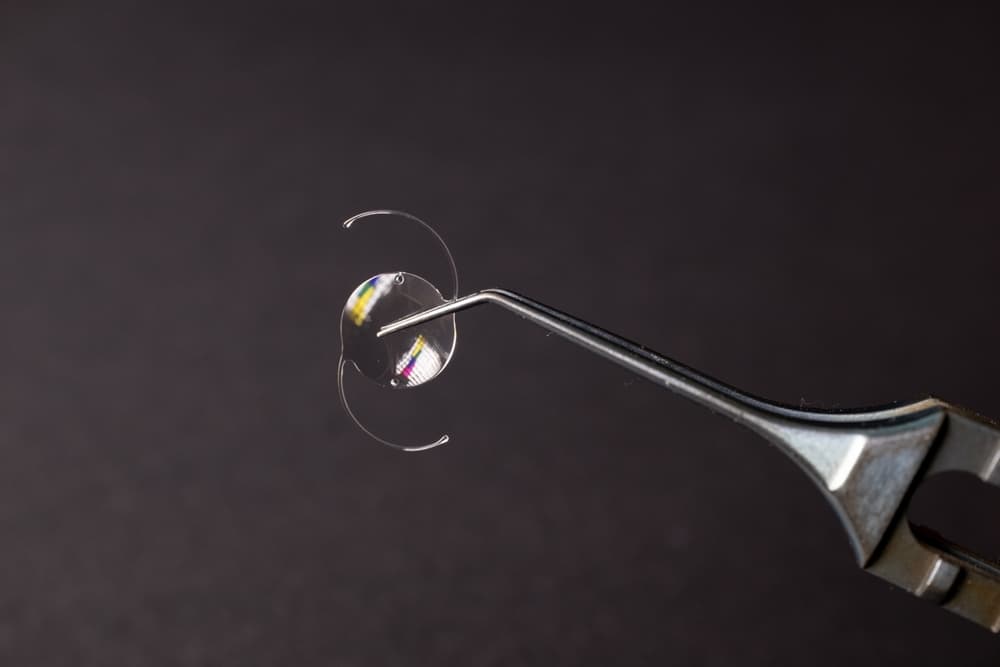
Historical Context
In 1949, Sir Harold Ridley, a British eye specialist, performed the first implantation of an IOL. Before the advent of intraocular lenses (IOLs), patients who underwent cataract surgery were left aphakic, meaning they had no lens to focus light. Following the procedure, these individuals relied on strong hyperopic glasses to refract light and properly focus images on the retina.
During World War II, Sir Harold Ridley witnessed pilots sustaining eye injuries from shards of broken airplane windshields. This experience inspired him to develop a groundbreaking solution: the intraocular lens (IOL). Constructed from polymethyl methacrylate (PMMA), this innovative lens transformed cataract surgery outcomes.
Traditional IOLs
Early intraocular lenses (IOLs) were rigid and offered limited options for adapting to varying light conditions. They also posed a risk of postoperative complications, including inflammation and dislocation. Nevertheless, these initial designs paved the way for more advanced and sophisticated IOL technology.
Recent Advancements in IOL Technology
IOL technology has evolved significantly over the years, marked by numerous advancements. Here are some of the most noteworthy recent developments that have enhanced the effectiveness and personalization of cataract surgery and vision correction.
Improved Optical Quality
Newer IOLs feature aspheric designs that minimize spherical aberrations, resulting in sharper image quality compared to conventional spherical designs. The integration of wavefront technology has led to the development of high-definition intraocular lenses (IOLs), offering improved visual acuity.
Enhanced Biocompatibility
Materials science has driven advancements in intraocular lenses (IOLs) that elicit minimal inflammatory responses. Techniques such as nanostructuring and plasma coating enhance surface properties. Significantly lowering the risk of posterior capsule opacification (PCO), a condition that can impair visual quality over time.
Customization and Personalization
Custom intraocular lenses (IOLs) are now available, offering the promise of patient-specific corrections. These specialized lenses can effectively address astigmatism and other vision problems. This level of customization enhances the success rate of cataract surgery by tailoring corrections to meet each individual’s unique needs.
Choosing The Right IOL: Factors To Consider
Choosing the right intraocular lens (IOL) is a personal decision that your lifestyle and visual priorities should guide. Here are several key factors to consider:
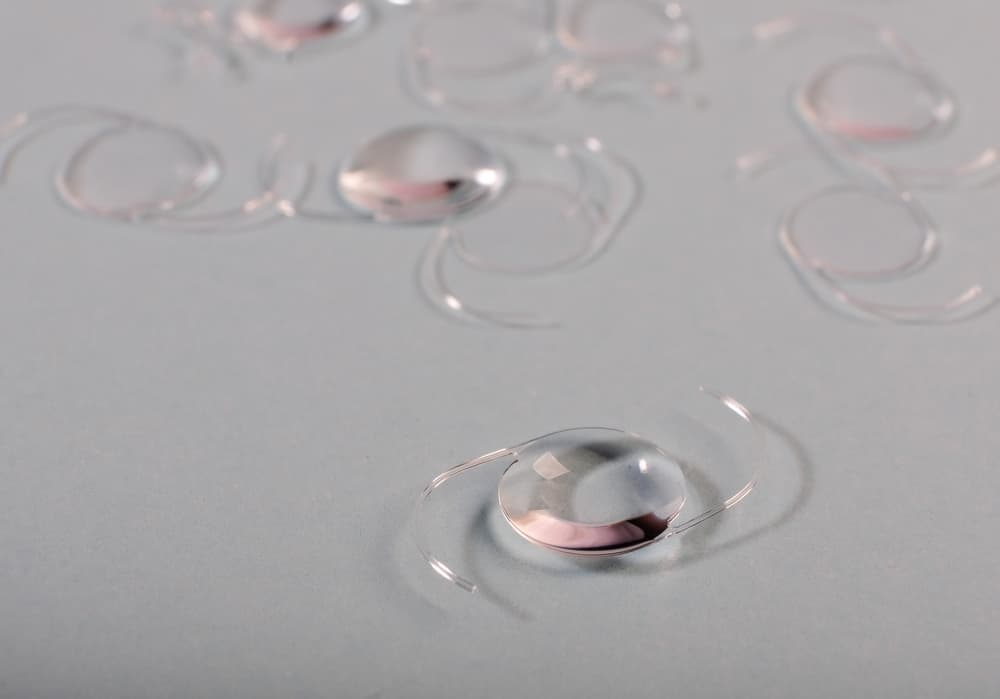
Your Daily Activities and Visual Needs
Do you prioritize distance vision for activities such as driving? Or do you frequently engage in close-up tasks like reading? Evaluating your daily activities and vision usage will guide you toward the intraocular lens (IOL) that offers the greatest benefits and comfort.
Your Eye Health
Do you have any pre-existing eye conditions, such as astigmatism or macular degeneration? Understanding your eye health is crucial for selecting the appropriate intraocular lens (IOL). For instance, a toric IOL can effectively address astigmatism, while certain IOL materials may be more suitable for retinal conditions.
Lifestyle Preferences
Would you prefer to be free from glasses for most activities, or are you comfortable using reading glasses as needed? Multifocal intraocular lenses (IOLs) can greatly lessen your reliance on glasses, although they may not be suitable for individuals who are sensitive to glare.
Cost Considerations
While cataract surgery is usually covered by insurance, selecting a premium intraocular lens (IOL), such as a multifocal or toric lens, may require some out-of-pocket expenses. By understanding the cost implications and benefits of different IOL options, you can make a financially informed decision that aligns with your vision goals.
Unveiling Modern Cataract Surgery: Minimally Invasive Techniques and IOL Options in Reno
The shift from large incisions to smaller openings offers numerous advantages. Patients undergoing Minimally Invasive Cardiac Surgery (MICS) are less likely to require sutures, and their incisions tend to heal quickly on their own. This alleviates post-surgical discomfort and minimizes the risk of infection and other complications.
The rapid healing associated with smaller incisions often allows patients to resume their normal activities within a few days. In stark contrast, traditional techniques involving larger incisions could result in weeks of recovery. Thus, the benefits of MICS become abundantly clear.
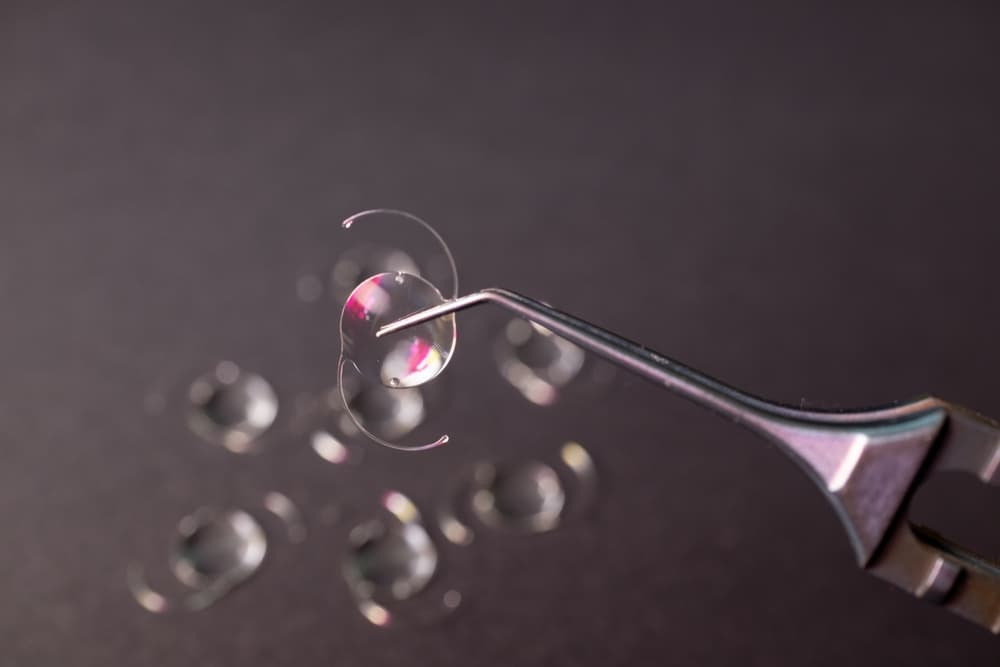
The Role of Intraocular Lenses (IOLs)
Intraocular lenses (IOLs) play a crucial role in cataract surgery. When the natural lens affected by cataracts is removed, it is replaced with an artificial lens that can dramatically enhance a patient’s vision. The remarkable versatility of these lenses offers a range of options tailored to fit individual lifestyles and vision requirements.
Replacing the Cloudy Lens: Restoring Clear Vision with IOLs
Intraocular lenses (IOLs) are transformative for vision correction and enhance overall lifestyle. They effectively address nearsightedness, farsightedness, and astigmatism, offering individuals a tailored view of the world.
The selection process for IOLs has evolved into a collaborative effort between the patient and the surgeon. Important factors such as the patient’s visual goals, occupation, and hobbies are carefully considered when selecting the appropriate lens. This personalized approach leads to significantly higher patient satisfaction rates.
Introduction to Post-Operative Care for Intraocular Lens (IOL) Patients
After eye surgery, it’s common to feel some discomfort, including scratchiness, stickiness, or tearing. Vision typically improves within 1 to 3 days, but it may take up to 10 weeks to fully realize the benefits and achieve clear sight.
It is essential to follow post-operative instructions carefully to ensure a smooth recovery and enhance your vision. Here are some important guidelines to keep in mind:
- Rest: Allow your eyes ample time to heal after surgery. Focus on resting in the initial days and limit strenuous activities and screen time.
- Eye Protection: Use the provided eye shield, especially while sleeping, to prevent accidental contact or pressure on the eye.
- Hygiene: Gently clean your eyelids with the prescribed solution to maintain cleanliness and minimize the risk of infection.
- Avoid Water: Stay away from swimming, hot tubs, and direct water exposure to your eyes for several weeks following the procedure.
- Pressure: Avoid rubbing or applying pressure to your eye for at least one week.
- Makeup: Refrain from using eye makeup for 1 to 2 weeks, and avoid face creams or lotions.
- Hair Treatment: Delay hair coloring or perming for a minimum of ten days after the surgery.
- Physical Activity: Avoid bending over or participating in strenuous activities such as biking, jogging, weightlifting, or aerobic exercises for two weeks or until your doctor says.
- Wear Sunglasses: Wear sunglasses on sunny days for one year post-surgery to protect your eyes.
- Showering: You may shower or wash your hair the day after surgery. Ensure that water, soap, shampoo, hair spray, and shaving lotion stay away from your eye, particularly during the first week.
Your Reno eye care specialist will offer personalized instructions specific to your situation. It is vital to adhere to these guidelines to promote effective healing and reduce the risk of complications.
Medication Management for IOL Patients

Properly using prescribed medications is crucial for managing inflammation, preventing infection, and promoting healing. Your ophthalmologist may prescribe the following eye drops:r ophthalmologist immediately if you experience any adverse reactions or have concerns.
- Antibiotics: Used to prevent infection during the early stages of recovery.
- Anti-inflammatory Drops: Designed to reduce inflammation and facilitate healing.
- Lubricating Drops: Help alleviate dryness and discomfort throughout the recovery process.
Follow the instructions closely, and never discontinue use without consulting your eye doctor.
Importance of Follow-Up Appointments
Regular follow-up visits with your Reno ophthalmologist are essential for tracking your recovery and maintaining long-term eye health. These appointments provide your doctor the opportunity to:
- Evaluate Healing: Assess the surgical site to confirm proper healing and detect any potential complications.
- Monitor Vision: Check your vision and make necessary adjustments to your treatment plan.
- Address Concerns: Respond to any questions or concerns you may have about your recovery journey.
Vision Adaptation, Stabilization, and Post-IOL Surgery Care
The path to achieving stable, optimized vision after surgery can be complex. It requires collaboration between the patient and their ophthalmologist, as well as diligent adherence to follow-up appointments and care instructions.

Factors Influencing Vision Stability
Several factors can influence the stability of vision following IOL surgery, including:
Type of IOL
The intraocular lens (IOL) type can significantly influence visual stability post-surgery. Monofocal lenses deliver excellent distance vision but may necessitate glasses for reading or intermediate distances. In contrast, multifocal and toric lenses provide a broader range of vision, though they often require a longer adjustment period.
Modern IOL Formulas and Biometry
Advancements in intraocular lens (IOL) formulas and biometry techniques have significantly enhanced refractive outcomes following cataract surgery. Nonetheless, despite the utilization of precise measurements and calculations, individual anatomical variations and unique healing responses may still result in unexpected refractive outcomes.
Refractive Surprises and Enhancements
After IOL surgery, patients might occasionally have leftover refractive errors that necessitate further enhancements like laser vision correction or IOL exchange. Our skilled ophthalmologists in Reno collaborate with each patient to identify the most effective approach to improve their vision.
Binocular Vision Alterations
An intraocular lens (IOL) insertion can impact binocular vision, especially when there is a notable refractive difference between the eyes. This adjustment may cause temporary visual disturbances while the brain adapts to the changed visual input.
Importance of Post-Operative Monitoring
After correcting your vision, continuing postoperative monitoring with your ophthalmologist is important. Regular follow-up appointments are crucial for detecting any issues that may arise during the healing process, ensuring optimal long-term vision stability.
Definitive Refractive Measurements
Definitive refractive measurements should be conducted at least four weeks post-IOL surgery to guarantee accuracy and stability. This timeframe allows our ophthalmologists to evaluate the necessity for further enhancements or adjustments.
Managing Patient Expectations
Patients must recognize that achieving stable, optimized vision following IOL surgery can take time and may involve additional interventions. Our team at Eye Care Professionals in Reno is committed to guiding patients through this journey and setting realistic expectations.
Potential Need for IOL Exchange
In rare instances, an IOL exchange may be required to attain the desired refractive outcome. This decision is made after thorough evaluation and discussion with the patient, considering their needs and goals.
Maintaining Perfect Vision with IOLs – Eye Care Tips for Long-Term Health
Safeguarding your eyes and ensuring optimal vision health is essential, particularly in light of recent advancements in ophthalmology. One notable development is Intraocular Lenses (IOLs). If you’ve recently had cataract surgery or are contemplating the procedure, understanding these innovations can greatly enhance your experience.
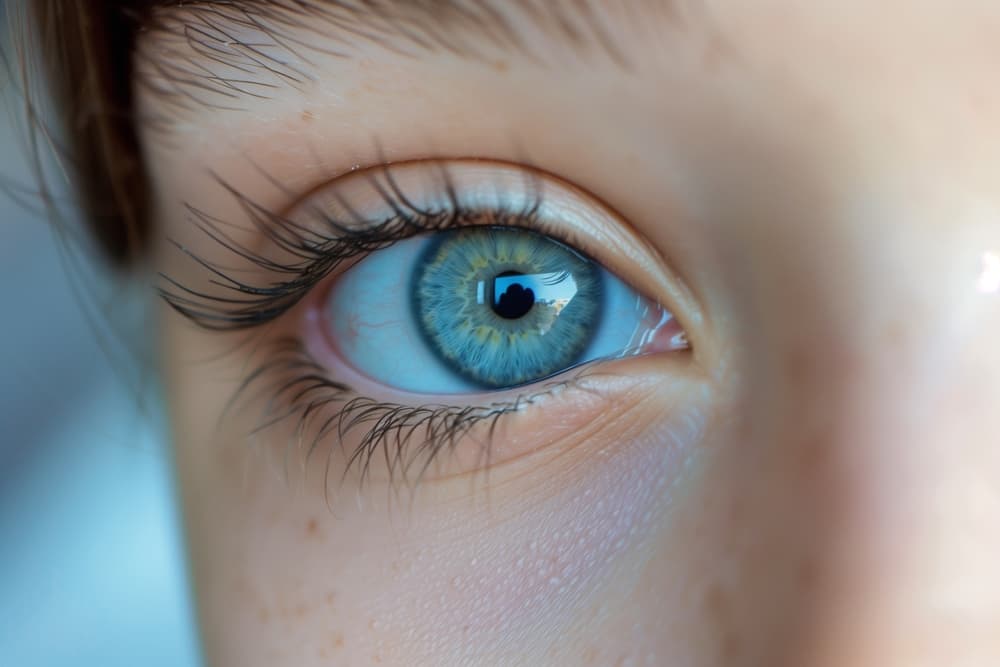
Pre-Surgery Eye Care
Preparing your eyes for IOL surgery is crucial for successful procedures and recovery. Here are some helpful tips to get your eyes ready:
Schedule a Comprehensive Eye Exam
A comprehensive eye examination is essential for identifying the most suitable intraocular lens (IOL) for your vision requirements. Your eye doctor will assess your overall eye health and check for any conditions that could impact the surgery.
Follow Pre-Surgery Instructions
Your eye surgeon will give you detailed instructions to follow before the surgery. This may involve discontinuing certain medications or using prescribed eye drops to prevent infection and reduce inflammation.
Maintain General Health
Maintaining your overall health can greatly influence the health of your eyes. It’s essential to consume a balanced diet packed with vitamins and minerals, particularly those that support eye health, such as vitamins A, C, and E.
Post-Surgery Eye Care with Intraocular Lenses (IOLs)
Post-surgery care is essential for safeguarding your eyes and preserving optimal vision health. Here’s how to ensure a smooth recovery:
Adhere to Your Doctor’s Instructions
Following your surgery, your eye doctor will provide specific guidance for eye care. This typically includes using prescribed eye drops to prevent infection and minimize inflammation.
Avoid Eye Strain and Shield Your Eyes
Refrain from engaging in activities that may strain your eyes for at least a few weeks post-surgery, such as heavy lifting or intense exercise. Additionally, wearing sunglasses will help protect your eyes from dust, wind, and bright light.
Attend Follow-Up Appointments
Regular follow-up visits are vital for monitoring your healing process and ensuring your eyes adapt well to the IOLs. Your doctor will assess for any complications and modify your treatment plan as necessary.
The Ultimate Guide to Choosing IOLs for Eye Conditions
Vision is a precious gift; preserving clear eyesight becomes increasingly important as we age. For individuals dealing with eye conditions such as presbyopia, astigmatism, and cataracts, Intraocular Lenses (IOLs) provide a transformative solution.

IOLs for Presbyopia
Presbyopia is a common age-related condition that affects everyone over 40. Leading to difficulties in focusing on nearby objects due to a loss of flexibility in the eye’s lens.
Addressing Presbyopia with IOLs
The primary treatment for presbyopia involves multifocal intraocular lenses (IOLs), specifically designed to provide clear vision at various distances. Unlike traditional lenses that only correct distance vision, multifocal IOLs enable you to see up close, far away, and everything in between.
Types of IOLs for Presbyopia
Several types of IOLs are available for the treatment of presbyopia:
- Multifocal IOLs: These lenses offer clear focus at multiple distances.
- Accommodating IOLs: These lenses adjust or change shape within the eye, mimicking the eye’s natural ability to focus.
- Extended Depth of Focus (EDOF) IOLs: These provide a continuous range of vision, minimizing the need for glasses.
IOLs for Astigmatism
Astigmatism is a widespread condition resulting from an irregularly shaped cornea or lens, causing blurred vision at all distances. It can also coexist with refractive issues such as myopia (nearsightedness) or hyperopia (farsightedness).
How IOLs Correct Astigmatism
Toric intraocular lenses (IOLs) are specifically engineered to address astigmatism. Unlike standard IOLs, these lenses feature varying powers across different meridians, allowing for a more personalized correction.
Types of Toric IOLs
A range of toric IOLs is available to accommodate varying degrees of astigmatism:
- Monofocal Toric IOLs: These lenses correct astigmatism while focusing on a single distance.
- Multifocal Toric IOLs: Designed to correct astigmatism, these lenses also provide multifocal vision benefits.
- EDOF Toric IOLs: These lenses offer a continuous range of vision while effectively correcting astigmatism.
IOLs for Cataracts
Cataracts are a common age-related condition in which the eye’s natural lens becomes cloudy, leading to impaired vision. They are one of the leading causes of vision loss among older adults.
Treating Cataracts with IOLs
Cataract surgery involves removing the cloudy natural lens and replacing it with an artificial IOL. This procedure restores vision and can correct other refractive errors, such as myopia, hyperopia, and astigmatism.
Options for Cataract-Correcting IOLs
There are several IOL options for cataract patients:
- Monofocal IOLs: Corrects vision at one distance, usually set for clear distance vision.
- Multifocal IOLs: Offers multiple focal points for near, intermediate, and distance vision.
- Toric IOLs: Corrects astigmatism along with cataracts.
- EDOF IOLs: Provides a continuous range of vision from near to far distances.
Cost Considerations and Insurance Coverage for Cataract IOL Implants
The cost of intraocular lens (IOL) implants can vary significantly. Influenced by factors such as the type of IOL selected, the complexity of the surgical procedure, and the healthcare provider involved.
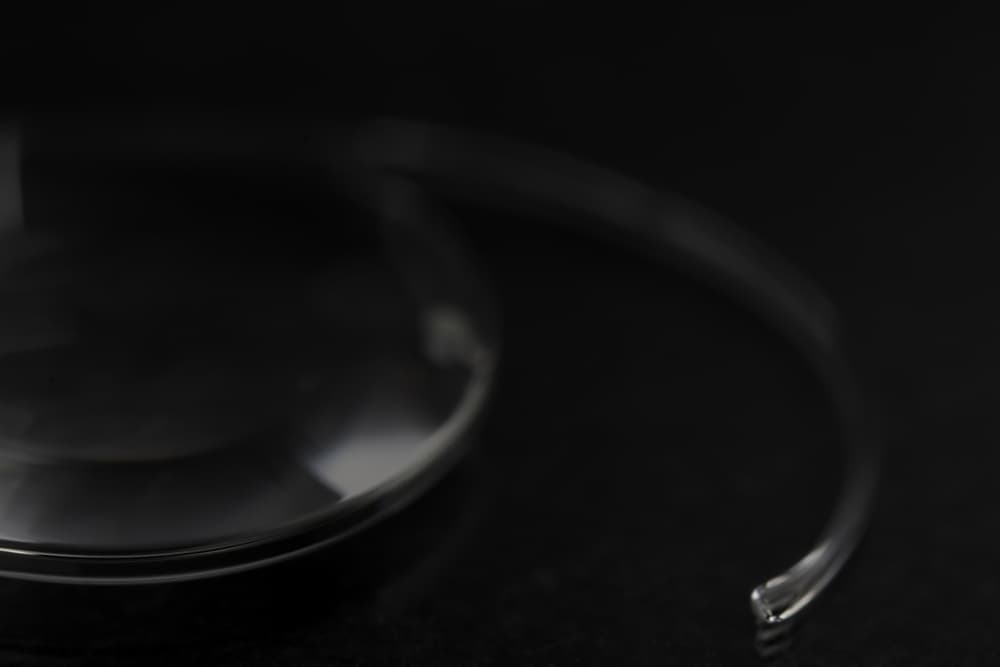
Exploring Different Types of IOL Implants
Several types of intraocular lens (IOL) implants are available, including monofocal, multifocal, and toric lenses. Monofocal lenses represent the most basic option and are typically covered by insurance plans. In contrast, multifocal and toric lenses provide additional benefits, such as correcting presbyopia and astigmatism, but they come at a higher price point.
The Financial Impact of Your IOL Implant Choice
The type of IOL implant you select significantly affects the overall cost. Monofocal lenses range from $1,000 to $3,000 per eye, while multifocal and toric lenses cost between $2,000 to $4,000 per eye. Your decision should be based on your specific vision requirements and budget considerations.
Factors Affecting the Total Cost of IOL Implants
In addition to the lens type, several other factors contribute to the total cost of IOL implants, including:
- Surgeon’s fees
- Facility charges
- Additional pre- or post-operative care
- Anesthesia costs
- Follow-up visits
For example, highly skilled ophthalmologists in Reno may charge more for their expertise, which often leads to better outcomes, fewer complications, and higher patient satisfaction. Additionally, the clinic’s reputation and the facility’s location can also influence the overall cost.
Achieve Perfect Vision with Customized Cataract IOL Implants
Customized IOL implants might be the solution you’ve been searching for. They are designed to meet the unique needs of each individual patient, offering a more precise and personalized approach to cataract surgery. In this article, we will discuss what customized IOL implants are, how they work, and the potential benefits they can offer.

Types of Advanced IOLs
Multifocal IOL Implants
Multifocal intraocular lens (IOL) implants are designed to provide clear vision at various distances, minimizing the reliance on glasses or contact lenses. These lenses feature multiple zones that focus light at different ranges, enhancing near, intermediate, and distance vision. Multifocal IOLs are especially advantageous for individuals with presbyopia, who experience difficulty seeing both near and far.
Toric IOL Implants
Toric IOL implants are designed to correct astigmatism, a prevalent refractive error leading to blurred or distorted vision. These lenses possess varying powers across different meridians, compensating for the cornea’s irregular shape. Toric IOLs deliver clear, stable vision and eliminate the need for additional astigmatism correction through glasses or contact lenses.
Light Adjustable Lenses (LAL)
RxSight has developed the first IOL that allows ophthalmologists to fine-tune your vision after cataract surgery. With a simple in-office light application to adjust the lens’s focusing power. With Light Adjustable Lenses, we can modify the lens implant’s power once it’s inside the eye. This innovation lets patients customize their vision based on personal preferences and lifestyle needs. The optimization process, conducted by our doctors after lens implantation, involves a few quick light treatment sessions in the office, each lasting just a few minutes.
Your Vision in the Best Hands
Choosing the right intraocular lens (IOL) for cataract surgery is a crucial decision that significantly impacts your visual outcomes and overall quality of life. With various options available, including monofocal, multifocal, toric, and advanced customizable lenses like Light Adjustable Lenses. Patients can select a solution tailored to their specific vision needs and lifestyle preferences.
Consulting with an experienced ophthalmologist like the ones at Eye Care Professionals can help clarify your choices and guide you toward the best option. Don’t hesitate to contact us at Eye Care Professional to discuss the advantages of each lens type and how they can enhance your life post-surgery.




